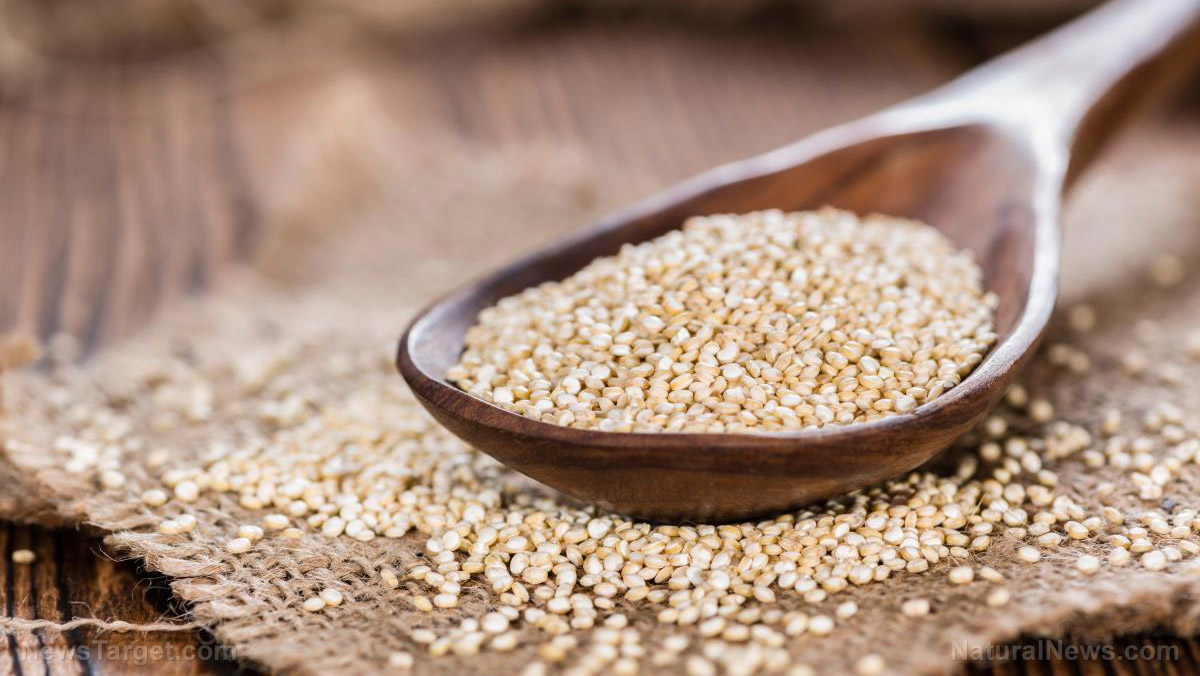Prepping basics: 8 Types of foods to keep in your survival pantry
07/07/2021 / By Virgilio Marin

You need to be wise about the foods you keep in your survival pantry because some foods go bad quickly. Others, on the other hand, last long but are just empty calories. (h/t to Survivopedia.com)
When preparing your survival stockpile, you have to consider the calorie content, cost, nutrient value and shelf life of food. Here’s why these considerations are important:
- Calorie content – The average adult needs around 2,000 calories a day to stay healthy. To ensure that you will meet your calorie needs when SHTF, you have to stock up on calorie-dense foods.
- Nutrient value – You should also include nutrient-dense foods in your survival stockpile to prevent nutritional deficiencies.
- Cost – It can be challenging to buy foods in bulk if you’re on a tight budget. However, you can buy more for the same amount of money by choosing low-cost but nutritious foods.
- Shelf life – Your stockpile will do you no good in a prolonged survival situation if you only stock up on foods that perish quickly.
What types of food to stockpile
Here are eight types of foods to store in your survival pantry:
Fruit
Fruits are rich in the nutrients that your body needs to function optimally. Making them a regular part of your diet helps prevent nutritional deficiencies, such as vitamin C deficiency.
Most fresh fruits are highly perishable, but you can always try various food preservation methods to extend their shelf life. Some of the best ways to preserve fruits are canning and freezing and drying.
Vegetables
Your survival stockpile should contain vegetables because they are chock-full of important nutrients. Like fruits, many veggies don’t last very long but you can extend their shelf life via food preservation, particularly via canning, freezing and drying, or purchasing freeze-dried products.
You should also consider growing vegetables at home, so you have a fresh and steady supply of food when SHTF. Many vegetables are easy to care for and can be grown in pots and planters.
Beans, legumes and nuts
Beans are staples of survival pantries because they contain large amounts of protein and last for a long time. They can last even longer when dried.
Legumes and nuts also store well and have a fairly long shelf life. These foods are also rich in protein and can be eaten as snacks or as part of a meal. Include beans, legumes and nuts in your survival pantry to add variety to your diet.
Meat
Meat is one of the best sources of protein and makes a meal more appetizing. Though fresh meat is perishable, canned meat has a long shelf life and is easy to store.
Grains
Grains are also staples of survival pantries because they have a long shelf life and are very filling. There are many types of grains you can choose from, including rice, wheat, quinoa and spelt. Each of these are packed with nutrients and can be turned into bread, pasta and the like.
Condiments
Commonly used condiments like vinegar are long-lasting and can be stored at room temperature. Those that need to be refrigerated after opening, such as mayonnaise, are quite easy to make. You can whip up your own sauce or dip using other foods in your stockpile.
Oils and fats
You need oil or fats to cook food. Most unopened bottles of cooking oils last up to 18 months before they start to go rancid. Make sure to stock up on healthy cooking oils, such as olive and flaxseed oils, to prevent disease.
Spices
Spices have a long shelf and add flavor to your meals. Many even offer health benefits. Include salt, pepper, garlic, onion powder, turmeric, parsley, sage and any herbs in your food stockpile to spice up your dishes.
A survival pantry should be filled with foods that are nutritious, calorie-dense and long-lasting because these are the best survival foods. Stock up on the foods listed here and rotate your supplies regularly to keep them fresh.
Sources include:
Tagged Under: emergency food, Food Preservation, Food storage, food supply, functional food, nutrition, off grid, pantry, preparedness, prepper, prepping, SHTF, stockpiling, survival, survival food, survival pantry, survival stockpile, survivalist
RECENT NEWS & ARTICLES
COPYRIGHT © 2017 GEAR.NEWS
All content posted on this site is protected under Free Speech. Gear.news is not responsible for content written by contributing authors. The information on this site is provided for educational and entertainment purposes only. It is not intended as a substitute for professional advice of any kind. Gear.news assumes no responsibility for the use or misuse of this material. All trademarks, registered trademarks and service marks mentioned on this site are the property of their respective owners.




















